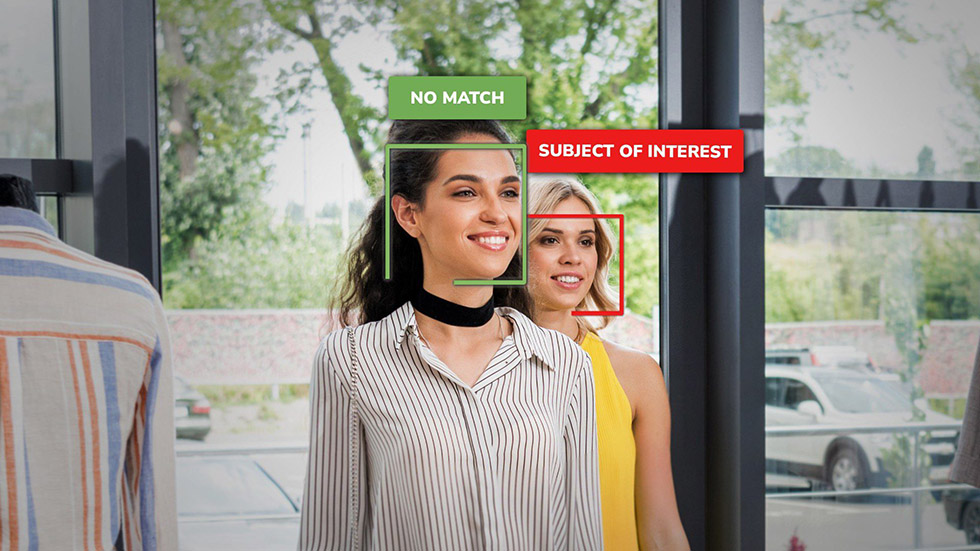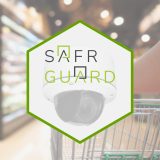
SAFR shares how AI-powered face matching helps independent and regional grocers protect people, profits and peace of mind.
Q: What is the state of retail crime in the U.S.?
Retail crime continues to escalate across the U.S., and its impact is being felt most severely by small and mid-sized businesses. While large national chains often dominate the headlines, independent and regional grocers are facing similar challenges of rising theft, repeat offenders, and growing safety concerns, but with far fewer resources to manage them.
Even a handful of theft incidents can have serious financial consequences for grocers of any size. Many report that shoplifting has evolved from occasional, opportunistic acts to more organized and coordinated activity that places both merchandise and employees at risk. These incidents erode already thin margins and contribute to higher insurance premiums, increased labor costs, and lower staff morale.
As these pressures mount, grocers are turning to face matching technology like SAFR Guard to help level the playing field. This solution enables store teams to identify repeat offenders as they enter, empowering them to act early and safely. By shifting from reactive to proactive security, independent and regional grocers can better protect their employees, reduce losses and maintain a secure and welcoming environment for shoppers.
Q: What benefits could face matching provide my store?
Face matching provides grocers with an effective way to prevent theft and improve safety without requiring additional staff or complex systems. By matching individuals previously involved in theft or violent incidents, store personnel can be discreetly alerted the moment those individuals re-enter the premises. This early detection capability helps deter criminal activity and allows teams to intervene safely before a situation escalates.
For many independent retailers, the greatest benefit is peace of mind. Employees feel safer knowing they are supported by reliable, real-time technology. Shoppers benefit from a more secure and comfortable environment. SAFR Guard delivers these capabilities with high accuracy and minimal disruption to daily operations. It is a modern deterrent that helps smaller stores operate with the same level of protection once reserved for large retail chains.
Q: Do I need a staff of trained loss prevention specialists to operate AI technology?
No. One of SAFR Guard’s key strengths is that it is designed to be “plug and play” without the need for technical nor IT resources.
Once installed, minimal training is needed before store managers and security staff are fully operational. Acknowledging alerts and documenting incident responses can all be done from a supplied device or their own cell phone. “The system is as easy as ABC” says Luis Moreno, Director of Operations at Fiesta Foods. SAFR Guard was developed to empower store teams, not overwhelm them. Most retailers can be fully operational with only a short onboarding session.
Q: What type of costs should I expect when using face matching in my store?
Unlike many AI systems that require expensive store-side servers or enterprise-scale integration, modern day face matching like SAFR Guard is affordable and scalable for grocery retailers. It runs on the camera within the store, so there is no need for large servers or extensive bandwidth.
Most importantly, the financial benefits are immediately measurable. Retailers using SAFR Guard have found that reductions in theft and improved safety allow the system to pay for itself quickly, often within the first several months of operation.
Q: What is the legality of using face matching in my stores?
Only one state in the US, Illinois, has state-wide restrictions on the use of face matching or facial recognition. Furthermore, most states have regulations that go further to state it is OK to use face matching for security purposes. The key is to ensure it is being implemented responsibly and transparently, and that there is compliance and accountability in how the technology is used.
Grocers should follow best practices such as clearly disclosing the use of the technology, limiting its purpose to safety and loss prevention, and adhering to local regulations. SAFR Guard has been designed to make this very easy and straightforward for retailers.
Q: What makes SAFR uniquely different from other face matching solutions in retail?
SAFR Guard stands apart from other AI solutions through its accuracy, performance, and purpose-built design for real-world retail conditions. SAFR Guard is not a general-purpose computer vision tool nor is it a general-purpose camera; it is a specialized face matching solution engineered for the fast-paced, variable lighting, and high-traffic environments of grocery stores. Shoppers do not frequently cooperate with cameras by looking at them. They are constantly in motion, what is also referred to as “wild faces.” SAFR Guard is designed specifically for these kinds of faces. It performs reliably even when faces are partially covered by hats, masks, or hoods.
Equally important is its architecture. SAFR Guard runs on the edge, providing real-time recognition and instant alert. This ensures both speed and privacy, two critical factors for any retail safety system. This also means retailers don’t need to sink thousands into servers to run AI like other face matching vendors require.
Unlike many other products, SAFR Guard is focused exclusively on theft deterrence and employee safety. That singular focus allows it to deliver unmatched precision and reliability. For retailers facing increasing security challenges, SAFR provides a proven, ethical and cost-effective solution to protect their business and their people.
[RELATED: NJFC Lauds Signing Of Organized Retail Crime Omnibus Bill]
About the author
Chris Ochs is the director of product management at SAFR, a division of RealNetworks specializing in advanced AI and computer vision solutions for security and safety. With more than 20 years of experience in Loss Prevention / Asset Protection, Chris helps retailers and security professionals understand how emerging technologies can deliver measurable business impact.
At SAFR, he leads the product strategy for SAFR Guard, the company’s retail-focused face matching platform that helps prevent theft and improve employee safety. His work bridges the gap between technical innovation and practical retail application, ensuring that AI solutions are accessible, compliant, and effective for businesses of all sizes.


